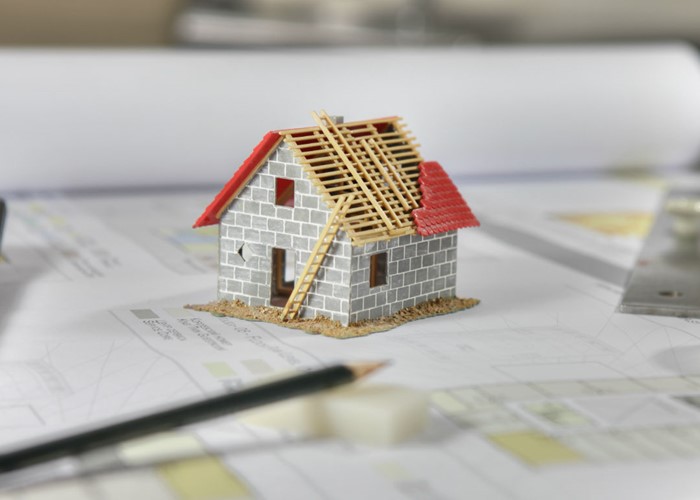
It's both legal and easily possible to do your own legal work when buying or selling your home.
A friend of mine recently complained about weeks and weeks of delays in his house purchase, caused, he believes, by his conveyancing solicitor.
Hence, I thought it was about time I tackled the subject of DIY conveyancing – i.e doing your own legal work on a house purchase or sale.
Many people believe it's illegal to do it yourself. It isn't. They're also told it's too complicated. This isn't necessarily true. It can be stressful, but some ordinary people do their own conveyancing and they succeed.
It does take self-confidence, however. You have to be good at deciphering small print. You have to be able to resist all the others involved in the process telling you to use a lawyer – for their convenience.
If you manage this, you could save yourself maybe £1,000, especially if you're both buying and selling – a huge sum of money to most of us.
I should point out that I don't know how many DIY conveyancers make costly mistakes. No doubt all the companies involved in the process will say individuals make lots of them, but it's impossible to know how much of that will be exaggerated by their pride or their financial needs.
However, if you're interested in doing this in principle, do some research to see if you think you're capable of it. All the information you need is in the public domain; lawyers hold no secret knowledge that a determined person can't learn for themselves. Most transactions involving properties registered at the Land Registry are straightforward.
You're not alone
Even though you're not aided by a professional, a good book will be your guide. Having just read all the relevant pages of an extremely comprehensive guide with checklists, the 500-page A Practical Approach To Conveyancing by Robert Abbey and Mark Richards, which is written in very clear English, I can tell you it's not beyond most people.
If you choose to buy a book such as this, you'll be glad to know you can skim over large chunks of it, because they only apply to lawyers, e.g. sections on client care, lawyers' costs and complaint handling. Huge sections will also clearly not apply in your particular situation. You could read the relevant bits quickly, making important notes, and then use it as a reference while you go through the process.
This book focuses on England and Wales, so unfortunately I can't write for the rest of the UK today.
A quick run-through of the main stages
Naturally I can't re-write a whole book for you here, but to give you an idea, the buyer's main stages could be summarised as:
- Inspect the property and get a survey of appropriate thoroughness depending on the circumstances.
- Check the draft contract. This is usually written by the seller's lawyer.
- Do checks and searches, and make further enquiries. Check the lawyer on the other side is real, and a local authority search is a must. There are a dozen more checks that you should consider, which might include a wiring inspection, a coal-mining search, and a drainage and water search. You might be able to get lots done at the same time through Thames Water Property Searches.
- Exchange contracts and pay a deposit. You exchange the same contract, but you each sign a copy, dating it on date of exchange, and send it to the other, making the deal legally binding.
- Immediately after exchanging, insure the property, if you're required to.
- Traditionally, the buyer drafts the purchase deed, and usually after the exchange. This is easy because it will simply be based on the terms already written in the contract, but it is necessary to complete the purchase and must be written on durable A4 paper. Two copies are sent to the seller's solicitor and one kept on record. Don't delay in getting this done after the exchange.
- The forms of purchase deed are usually TR1 or TR2 from the Land Registry.
- Engrossment. Once the seller's lawyer has approved the draft deed, the buyer produces the final form of deed, called the engrossment. However, if the seller approves the draft as is, the top copy you sent can be used as the engrossment.
- Execution: signing the deed.
- Another physical inspection. Physically inspect the property immediately prior to completion to ensure the fixtures and fittings included in the contract are in place, and to see who is occupying. Unexpected occupants claiming a right to live there could cause you trouble.
- Completion. This is when the balance of the purchase price is paid, and deeds and keys are swapped. Form DS1 is for completion.
- Stamp duty land tax is paid.
You can get forms at the Land Registry. The lender will still appoint a lawyer to arrange the mortgage, even if you do the conveyancing yourself.
Is it worth it, in the end?
While you could save £1,000 against traditional practitioners, with online conveyancers and more electronic processing, the costs of getting conveyancing done professionally are coming down and can be just £300 if you shop around, or more for simultaneously buying and selling.
You have to weigh up the benefits of doing it yourself (which might include saved money, potentially faster work, and satisfaction) against the effort involved in learning the process and filling forms.
Having now researched this, I'm reassured by this page, which makes some very similar points to my own.
More on property from lovemoney.com
There are only two mortgages worth buying